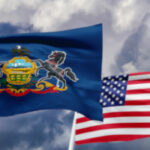CUMULUS Media-owned radio network Westwood One led a study on the engagement tendencies among fans of the National Football League. According to the results, Westwood One’s play-by-play NFL broadcasts reach over 56 million listeners over the season, with many of the radio listeners being more engaged and more likely to place a bet or play fantasy.
Radio Listeners Are Much More Knowledgeable and Attentive
This data is based on the NFL Fan Tracker, a Nielsen Portable People Meter analysis, and research from the GfK MRI Ipsos.
CUMULUS MEDIA’s chief insights officer, Pierre Bouvard, commented on the study’s results. According to him, it is undoubted that the TV audience and the radio audience are two fundamentally different things. Bouvard explained that according to the study, casual sports viewers tend to favor the television broadcast, while radio fans are on average more engaged. Judging from the study’s statistics, radio NFL listeners are usually more knowledgeable on the sport, often research info on their phones, frequently watch games live, and are often asked for sports advice by their peers.
Bouvard summarized that the radio viewers are a highly attentive audience that brands want to take into consideration. According to the research, their attentiveness also makes them much more likely to be influenced by marketing.
The Study Found Some Curious Statistics
It turns out that radio listeners are not only more knowledgeable but also more engaged in the NFL. According to the statistics, those fans tend to be avid players of sports fantasy games or sports bettors.
The Westwood One’s NFL broadcasts lead to a plethora of new listeners coming in and expanding the radio network’s reach. The numbers tell that about 46 million unique listeners follow the broadcasts during the season, with 10 million more who catch up after the season ends, bringing the grand total to 56 unique auditors per season.
Ads improve a game’s reach significantly. Increasing the number of ads tenfold has proven to reach four times as many people. The reason for this is that many people tune in at different points of the games.
The data also reveals that radio NFL listeners have diverse demographics with people from all genders and ages, unlike the TV viewers who tend to be older. Radio enthusiasts tend to be more career-oriented on average and were found to spend about 16% more spending than their TV peers. A big number of the auditors listen away from home, with many of them listening from their cars while driving.
Lastly, the radio broadcast generates reach to the TV one, with Westwood One reporting its NFL radio broadcast increases the TV audience by 24%.
People often underestimate the potential of radio as it lacks the visual aspect of a TV screen. Yet, it seems like the radio’s inherent advantages still yield it a significant audience of knowledgeable sports fans.




